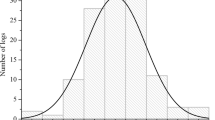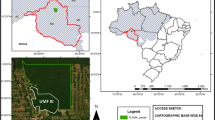Abstract
In sawmills logs, produced by forestry associations, are graded. The grade of a log depends on the log dimensions and the quality of the log. Depending on the target lumber grades, logs of a specific log grade are cut with a specific sawing pattern. Hence during the cutting of logs of one specific log grade, not only the target lumber grades, but also a large number of other lumber grades are produced. The range of the resulting lumber grades is mainly due to the quality differences in logs in one log grade. In this paper, a statistical model to predict the lumber quality depending on the characteristics of a log quality is elaborated. A more target-oriented grading could be deduced for the logs observed from the model results. Based on this model, the requirements of sawmills regarding log quality features can be defined more precisely depending on the target lumber grade. In a further step, the relation between lumber quality and tree quality parameters could be investigated. According to the need of optimisation of processes in the whole value-added chain, this information can be used to adapt forest vegetation management in the future.
Zusammenfassung
In Sägewerken wird Rundholz, das von Forstunternehmen erzeugt wird, sortiert. Die Sortierung erfolgt anhand von Rundholzdimension und Rundholzqualität. In Abhängigkeit vom benötigten Schnittholz wird ein bestimmtes Rundholzsortiment mit einem bestimmten Schnittbild eingeschnitten. Während des Einschnitts von Rundholz wird aber nicht nur das gewünschte Schnittholz erzeugt, es fällt beim Einschnitt auch ein großer Anteil an anderen Schnittholzqualitäten an. Die Streuung der erzeugten Schnittholzqualitäten ist vor allem auf die unterschiedlichen Qualitätseigenschaften der Rundhölzer in einem Sortiment zurückzuführen. In dieser Arbeit wird ein statistisches Modell zur Vorhersage der Schnittholzqualität in Abhängigkeit von der Rundholzqualität beschrieben. Dazu wird der Einschnitt von Lärchen Rundholz und das dabei anfallende Schnittholz betrachtet. Als wesentliche Einflussgröße wurde für dieses Sortiment das gemeinsame Auftreten von Krümmung und Verfärbung am Rundholz festgestellt. Auf Basis dieser Erkenntnis wurde eine neue Sortimentbildung festgelegt. Die gewonnenen Erkenntnisse können in Zukunft dazu dienen, für ein Sägewerk in Abhängigkeit von den erzeugten Schnittholzsortimenten die Rundholzsortierung anzupassen.








Similar content being viewed by others
References
Agresti A (1990) Categorical data analysis. Wiley, New York
Fahrmeir L, Hamerle A, Tutz G (1995) Multivariate statistische Verfahren. Walter de Gruyter, Berlin
Grönlund U, Broman O (1995) Relations between wood properties and manual grading—an approach based on multivariate analysis. Holz Roh- Werkstoff 6:53
Hecker M, Ressmann J, Becker G, Merforth C (2000) Prognosis of sawn timber quality based on roundwood grading—comparison of selected national and European grading rules for roundwood and sawn timber. Holz Roh- Werkstoff 3:55
Hogl K (1993) Die Wettbewerbsfähigkeit der österreichischen Holzwirtschaft unter besonderer Berücksichtigung der Sägeindustrie Dissertation. Universität für Bodenkultur, Wien
McCullagh P, Nelder JA (1989) Generalized linear models, 2nd edn. Chapman and Hall, London
ÖHHU (1995) Österreichische Holzhandelsusancen. Verlag der Wiener Börsekammer, Wien
Schwarzbauer P (1996) Long-term supply and demand projections for wood products in Austria. Schriftenreihe des Instituts für Sozioökonomik der Forst- und Holzwirtschaft. Universität für Bodenkultur, Wien
Tutz G (2000) Die Analyse kategorialer Daten. Oldenbourg Verlag, München, Wien
Wilkinson GN, Rogers CE (1973) Symbolic description of factorial models for analysis of variance. Appl Stat 22:392–399
Acknowledgements
This work was supported by the Austrian Science Fund (FWF) Grant P17434-N13.
Author information
Authors and Affiliations
Corresponding author
Rights and permissions
About this article
Cite this article
Petutschnigg, A.J., Katz, H. A loglinear model to predict lumber quality depending on quality parameters of logs. Holz Roh Werkst 63, 112–117 (2005). https://doi.org/10.1007/s00107-004-0537-3
Published:
Issue Date:
DOI: https://doi.org/10.1007/s00107-004-0537-3




